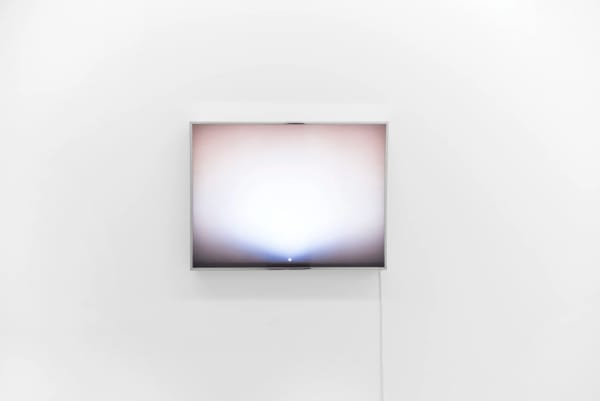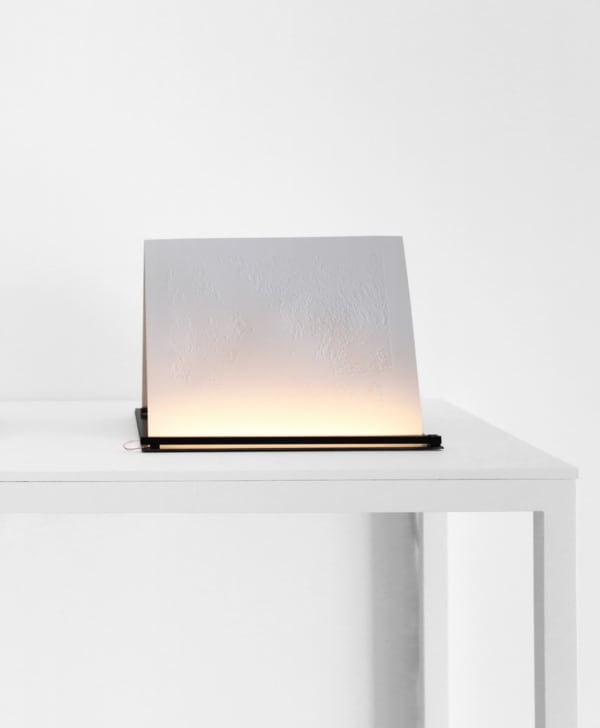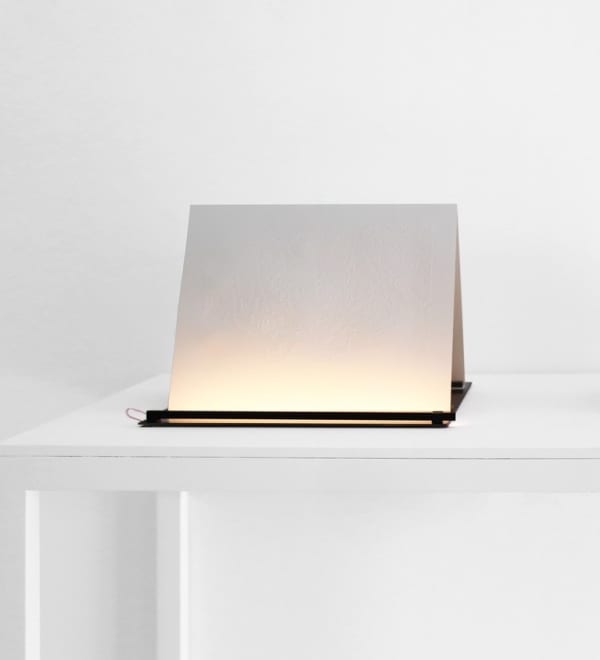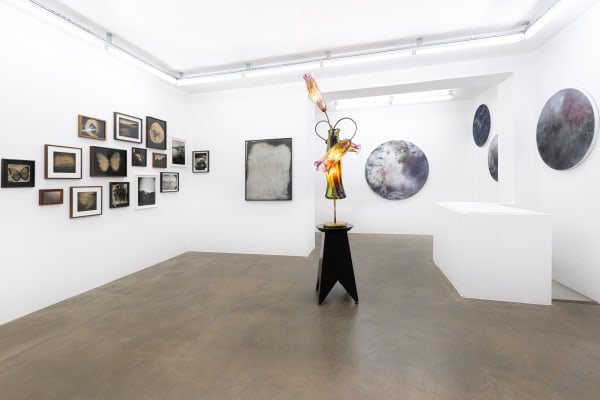Félicie d'Estienne d'Orves
"Her artworks mainly focus on the relationship between astrophysics and space, and on the study of the natural cycles of light."
Félicie d’Estienne d’Orves is a French multidisciplinary artist born in 1979 in Athens, who lives and works in Paris.
The artist’s research focuses on vision, its processes and conditioning. Her work combines light, sculpture and new technologies in immersive installations. Through a phenomenological approach to reality, she strives to emphasize the perception of time as a continuum, bridging optic, acoustic, astrophysics and cognitive sciences to her artistic approach. Since 2014, her artworks have mainly focused on the relationship between astrophysics and space, and on the study of the natural cycles of light.
Her work has notably been shown at the Lieu Unique (Nantes, France), the Centre Pompidou (Paris, France), Le Centquatre 104 (Paris, France), Le Fresnoy Scène Nationale (Tourcoing, France), La Friche (Marseille, France), Cheminée EDF (Le Havre, France), Abbaye de Maubuisson (Saint-Ouen-l’Aumône, France), Watermans Arts Center, (London, United Kingdom), New Art Space / Sonic Acts (Amsterdam, Netherlands), TBA Teatro do Bairro Alto (Lisbon, Portugal), ICAS (Dresde, Germany), Ars Electronica (Linz, Austria) – Elektra Festival (Montréal, Canada), Day For Night (Houston, Texas, United States), OCAT (Shanghai, China), Aram Art Museum (Goyang, South Korea), etc.
-

When time becomes matter
A cosmic dialogue between Félicie d'Estienne d'Orves & Gabriel Sobin 12 Oct - 4 Nov 2022When Time Becomes Matter l Dans les plis du temps A Cosmic Dialogue between Félicie d'Estienne d'Orves and Gabriel Sobin From 12th October to 4th November. 7 rue Saint-Claude, 75003...Read more -

Soleils martiens
Félicie d'Estienne d'Orves 20 May - 28 Aug 2022From May 20th to August 28th 2022, French artist, Félicie d'Estienne d'Orves' will be showcasing her first monographic exhibition in France at the the Lieu Unique (Nantes, France). Entitled Soleils Martiens (Martian suns), the artist explores the terra incognita that is outer space. Working with high powered technologies of light and sculptures, her artworks are a peek into the depth of the astral sky. Known for her deep astrophysic observations, Felicie’s art is of a different dimension and frame, where light and time are in a space beyond us.Read more
Soleils martiens est la première exposition monographique de la plasticienne française Félicie d’Estienne d’Orves en France. L’artiste associe nouvelles technologies, lumière et sculptures, pour explorer, à la manière des land artists des années 1970, la « terra incognita » qu’est l’espace. Ses œuvres invitent à porter le regard vers les profondeurs du ciel astral et révèlent un système de perception différent du nôtre où la lumière et le temps obéissent à des règles radicalement autres, que les scientifiques utilisent pour leurs observations et mesures, matériau de base pour la création des œuvres. -

SPACE(LESS)
Collective exhibition, Paris 8 Oct - 10 Nov 2019The voïd, French Designer and Architect Charlotte Perriand used to say, contains everything, because it represents the ability to move, the potentiality of motion. But, let's imagine an infinite space, without any point of reference. In such a space, movement would be impossible, because there would be nothing to measure the travelled distance. Thus for this proposition to be true, the voïd must at least contain, a milestone/marker.Read more
Situated in its midst, this exhibition “Space (less)” borrows this frame of reference, questioning the existence and acknowledgment of space and how it's understood and perceived in society. What is space and how do we know define or demarcate it? Interpreted differently by our artists, the works of Felicie d’Estienne d’Orves and Pandora Mond take on the mysteries of cosmic space and light. In contrast, the work of Lara Porzak plunges the viewer into a timeless universe where only preserved memories services as a marker of existence. At the same time, the immersive exhibitions of Jayde Cardinalli and Noémie Lacroix provides a sensory perspective, alongside Hugh Findletar, whose works offer a poetic response to the contradictory yet complementary duality of what it means for a cup, a vessel, a demarcated space to be half full.







